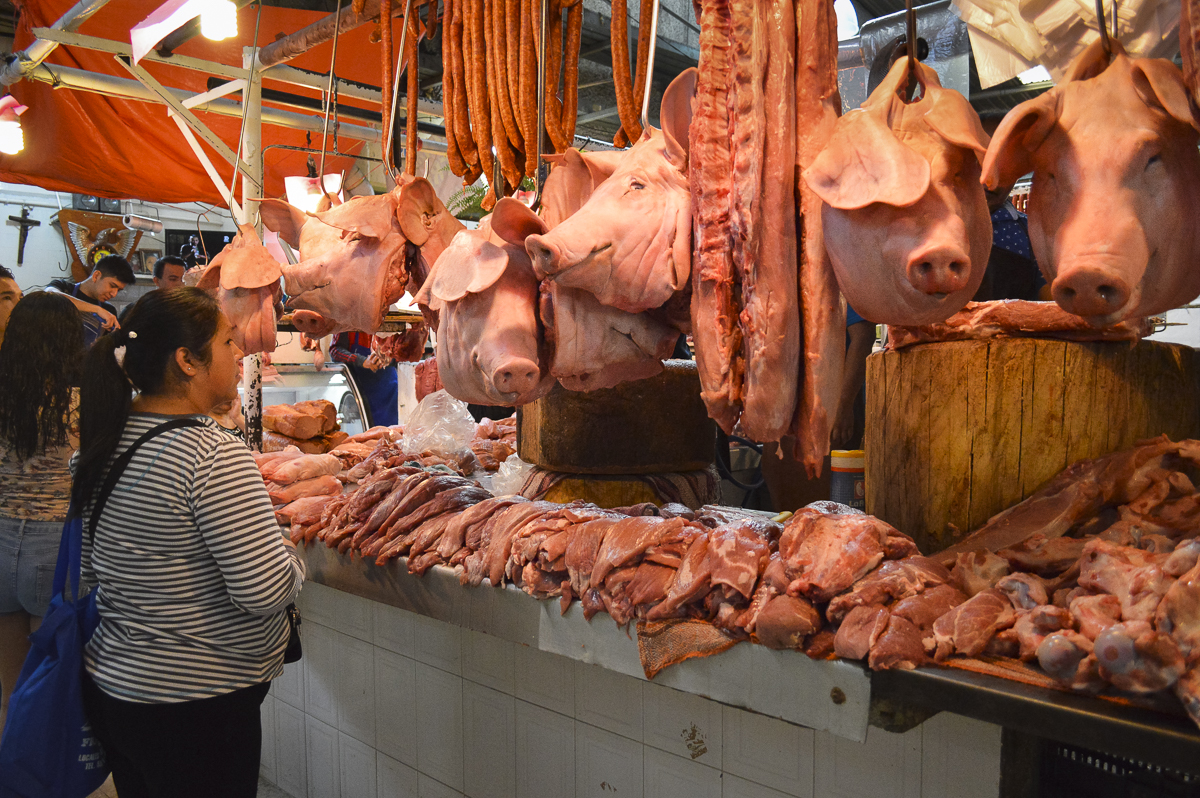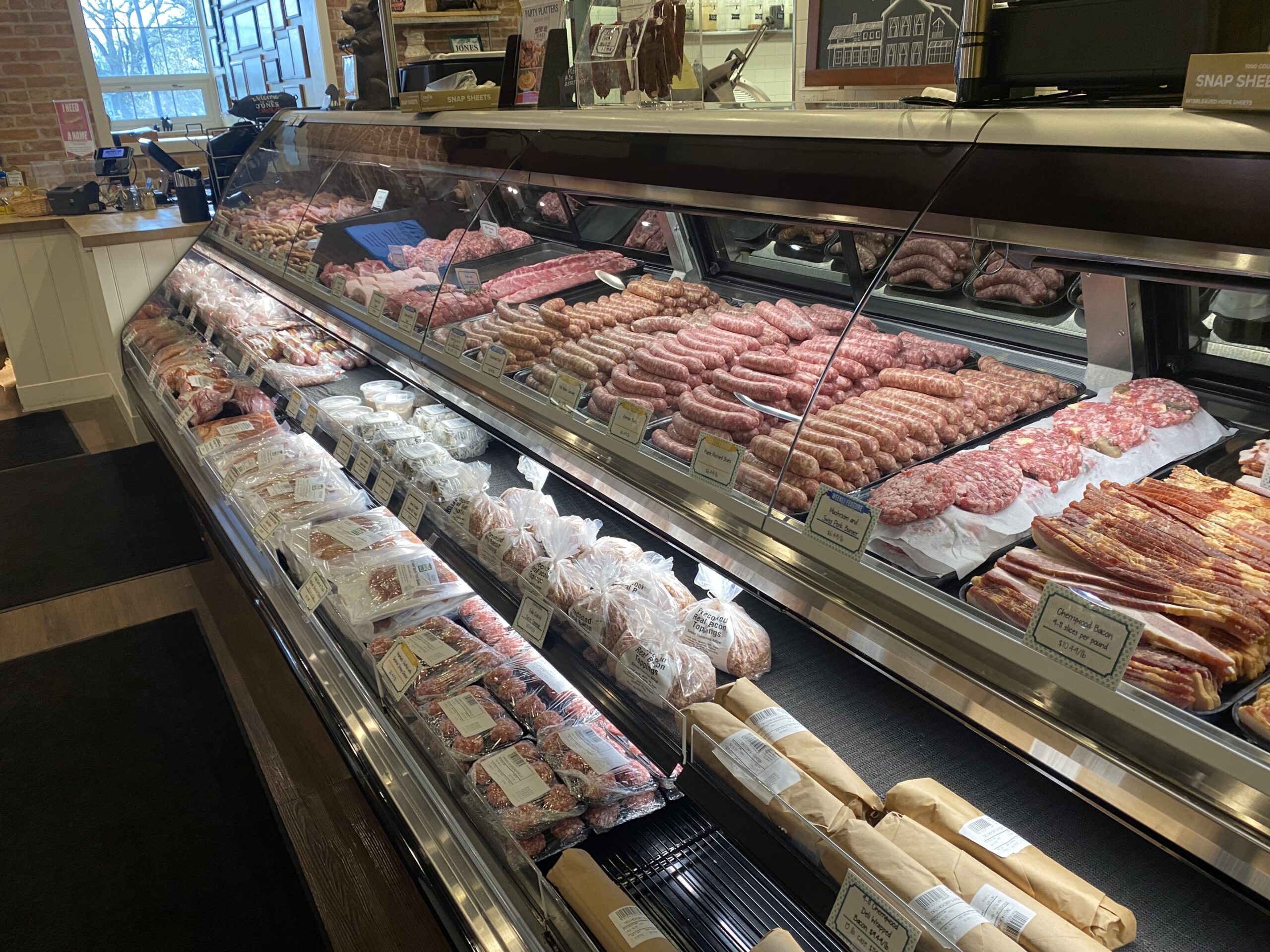What Makes Bagley Farms Meat Market Edwardsville IL Stand Out for Meat Lovers
What Makes Bagley Farms Meat Market Edwardsville IL Stand Out for Meat Lovers
Blog Article
Uncover the Art of the Butcher's Cut in a Modern Meat Market
In the ever-evolving landscape of contemporary meat markets, the butcher's cut has actually transcended its typical origins, merging old-time workmanship with contemporary techniques. bagley farms meat market edwardsville il. Today's butchers are not merely processors of meat; they are experienced craftsmens who stress sustainability and ethical sourcing. Their experience in picking and preparing cuts customized to details culinary requirements offers an unrivaled eating experience. What genuinely sets the modern butcher apart is their capacity to forge a deeper connection between customers and the beginnings of their meat. Just how do these masters equilibrium custom with development, and what effects does this have for the future of meat intake?
Evolution of Butchery Methods

The mid-20th century saw butchery techniques additionally improved by clinical understandings right into muscle biology and meat aging, enhancing both inflammation and taste. Developments like vacuum cleaner packaging and refrigeration expanded product shelf-life, allowing butchers to expand offerings and improve quality assurance. This period additionally marked the rise of specialized devices, such as band saws and meat slicers, which raised precision and efficiency in meat handling.
The 21st century has actually introduced digital modern technology right into the butchery realm. Electronic systems currently assist in tracking animal provenance and enhancing cuts to meet particular customer choices. Additionally, a rebirth in artisanal butchery has arised, blending standard abilities with modern-day knowledge to satisfy consumers looking for honest and lasting meat options. This development emphasizes a vibrant interplay in between tradition and technology, meeting modern demands while maintaining the craft's heritage.

Recognizing Meat Cuts

Comprehending the complexities of meat cuts is vital for both butchers and customers looking for quality and worth. For butchers, accurate cuts show ability and respect for the craft, ensuring minimal waste and optimal yield.
The main categories of meat cuts include primal, sub-primal, and retail cuts. Primal cuts, such as the loin, rib, and chuck, are the large sections originally separated from the carcass. Butchers then break these down additionally right into sub-primal cuts, prior to ultimately producing retail cuts readily available to customers, like ribeye or tenderloin. Each phase requires mindful interest to physiological framework and muscle structure.
Recognizing muscular tissue composition is critical; muscles used more often by the animal often tend to be harder and are best matched for sluggish food preparation methods, while less-used muscular tissues, like those found in the loin, are much more tender and suitable for barbecuing or roasting. Knowledge with these distinctions encourages customers to make educated options, boosting their culinary ventures.
Selecting Quality Meat
Selecting the best meat involves greater than simply picking an aesthetically appealing item from the display screen. The art of selecting high quality meat calls for a check here critical eye and expertise of certain qualities that represent quality and quality. Pay interest to the color; beef should have a brilliant, cherry-red shade, while lamb ought to display a soft pink tone, and pork a pale pink. This shows the meat is fresh and hasn't official site been subjected to oxygen for also long.
Secondly, think about the marbling, which refers to the white flecks of fat within the muscle. Correct marbling is a crucial indication of tenderness and flavor, as it melts throughout food preparation, boosting the meat's juiciness. Remember, greater marbling commonly associates with premium quality cuts, such as USDA Prime.
Texture is one more vital variable; meat must really feel firm to the touch, not slimy or extremely soft. Additionally, bear in mind the fragrance. Fresh meat must have a tidy, neutral scent, complimentary from any kind of sour or repulsive odors.
Combining Cuts With Food Preparation Approaches
Successfully coupling cuts of meat with the appropriate food preparation methods is crucial for accomplishing ideal taste and texture. Different cuts vary in inflammation, marbling, and connective cells material, each needing particular techniques to open their potential. Tender cuts like filet mignon and ribeye, with their fundamental marbling, advantage from high-heat, quick-cooking methods such as cooking or pan-searing. These techniques boost the meat's natural tastes and ensure a juicy finish.
Conversely, harder cuts like brisket and chuck roast are abundant in collagen, which breaks down right into gelatin when prepared slowly. These cuts are optimal for braising or slow-moving roasting, enabling the meat to tenderize gradually and establish deep, intricate tastes. Likewise, cuts such as brief ribs and pork shoulder prosper with slow-cooking approaches, where expanded cooking times transform their durable structures right into succulent dishes.
Lamb shanks and oxtail, which need prolonged food preparation to tenderize, are ideal prospects for cooking or slow-moving simmering. These methods coax out abundant, passionate tastes while preserving wetness. By comprehending the unique characteristics of each cut, cooks and home cooks alike can raise their culinary creations, ensuring each dish is both satisfying and remarkable.
The Butcher's Role Today
Browsing the progressing landscape of the contemporary meat market, the butcher's function today prolongs past mere prep work of cuts. Contemporary butchers are cooking artisans, teachers, and advocates for sustainable practices.
Along my explanation with crafting exact cuts, butchers currently engage straight with clients, providing cooking guidance and tailoring choices to match individual needs and choices. Their knowledge in meat aging, marbling, and flavor accounts equips customers to make enlightened choices, improving their cooking experiences. This tailored solution exemplifies the butcher's advancing role as a trusted consultant in the kitchen.
Additionally, butchers are crucial in minimizing waste, utilizing entire pets to produce diverse products such as sausages and stocks - bagley farms meat market edwardsville il. This thorough strategy not only appreciates the pet yet additionally aligns with contemporary sustainability goals. By doing this, the modern butcher embodies both custom and innovation, adjusting to an ever-changing market while protecting the virtuosity and honesty of their craft

Conclusion
The modern butcher's craft intricately weaves conventional techniques with modern-day advancements, stressing lasting methods and ethical sourcing. Proficiency in comprehending diverse meat cuts and high quality signs encourages butchers to provide enlightened suggestions, lining up certain cuts with ideal cooking techniques. This competence not just boosts cooking experiences however likewise reinforces the connection in between customers and the origins of their food. By recognizing historic practices while welcoming contemporary needs, the butcher's role continues to be crucial in today's advanced meat market.
Report this page